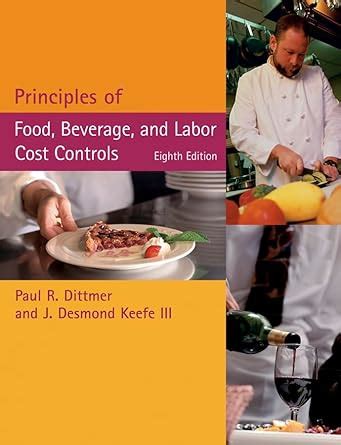Principles of Food, Beverage, and Labor Cost Controls: A Comprehensive Guide
Effective cost control is crucial for the success of any food and beverage establishment. This guide delves into the core principles of managing food, beverage, and labor costs, offering actionable strategies for optimizing profitability and achieving sustainable growth.
Understanding Food Cost Control
Food cost control involves meticulous tracking and management of all expenses related to ingredients. The primary goal is to maintain a healthy food cost percentage, typically aiming for a range of 28-35% of revenue, though this can vary depending on the type of establishment and menu offerings.
Key Strategies for Food Cost Control:
- Accurate Inventory Management: Implement a robust inventory system, using FIFO (First-In, First-Out) methods to minimize waste from spoilage. Regular physical inventory counts are vital for cross-referencing and detecting discrepancies.
- Standardized Recipes: Create and enforce standardized recipes to ensure consistency in portion sizes and ingredient usage. This minimizes waste and guarantees consistent product quality.
- Effective Purchasing: Negotiate favorable prices with suppliers, explore bulk purchasing options, and consider sourcing from local suppliers to reduce transportation costs.
- Portion Control: Train staff to accurately measure and serve portions. Over-portioning significantly increases food costs.
- Waste Reduction: Implement strategies to minimize food waste at every stage – from receiving to preparation and service. This includes proper storage, efficient cooking techniques, and creative use of leftovers.
- Menu Engineering: Analyze menu profitability by identifying high-profit and low-profit items. Adjust pricing and menu offerings based on this analysis.
Mastering Beverage Cost Control
Beverage cost control mirrors many aspects of food cost control, but also presents unique challenges. Target beverage cost percentages typically fall within the range of 18-24% of beverage revenue.
Essential Strategies for Beverage Cost Control:
- Precise Pouring: Train staff on proper pouring techniques to avoid over-pouring and minimize wastage.
- Inventory Control for Alcoholic Beverages: Maintain rigorous inventory management, especially for alcoholic beverages. Utilize a perpetual inventory system to track stock levels accurately.
- Efficient Bar Operations: Optimize bar layout and workflow to ensure efficient operations and minimize spillage.
- Menu Engineering for Beverages: Regularly review beverage profitability, and adjust prices and offerings to maximize profits.
- Creative Beverage Creations: Develop signature cocktails or mocktails that utilize less expensive ingredients without compromising on quality or taste.
Effective Labor Cost Control
Labor costs typically represent one of the largest expenses in the food and beverage industry. Effective labor cost control aims to optimize staffing levels while maintaining efficient and high-quality service. Target labor cost percentages often range from 25-35% of revenue, though this can vary greatly based on business model.
Key Elements of Labor Cost Control:
- Strategic Staffing: Implement a detailed scheduling system to match staffing levels with anticipated customer demand. This prevents overstaffing during slower periods.
- Cross-Training: Cross-train staff to perform multiple roles, enhancing flexibility and reducing the need for specialized staff.
- Employee Productivity: Implement systems for monitoring employee productivity and identify areas for improvement.
- Effective Scheduling Software: Utilize scheduling software to optimize staffing levels and reduce labor costs.
- Employee Empowerment: Empower employees to identify and suggest improvements to operational efficiency.
Integrating Cost Control Strategies
Successfully managing food, beverage, and labor costs requires an integrated approach. Regular analysis of cost data, coupled with ongoing adjustments to operational practices, is essential for maintaining profitability. Implementing a robust Point-of-Sale (POS) system can greatly assist in data collection and analysis, leading to more informed decision-making.
Conclusion
By focusing on these core principles and implementing the recommended strategies, food and beverage businesses can significantly improve profitability, enhance operational efficiency, and ultimately achieve sustainable growth. Remember that consistent monitoring, analysis, and adaptation are crucial for long-term success in controlling costs and maximizing profits.
